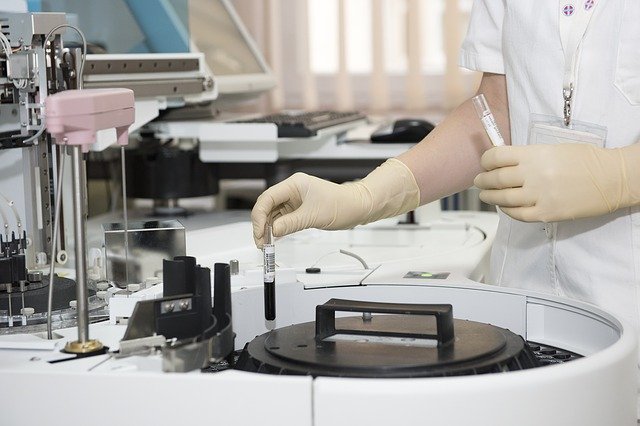NIH Lays Out Vision for Nutrition Research
The National Instituts of Health (NIH) has released the “2020–2030 Strategic Plan for NIH Nutrition Research,” developed by the NIH Nutritional Research Task Force. The report calls for research investments in Precision Nutrition. Unlike personalized nutrition or nutrigenomcis, Precision Nutrituion encompasses both internal and external contributions: diet, genetics, physical health, microbiome, metabolism, dietary habits, activity level, socioeconomics, psychosocial characteristics, and environmental factors. Broad aims of the research would be the development of standard methods, increased use of data science and workforce development.
In this blog, IBO looks at how the vision laid out in the report could affect the development and demand for laboratory research tools. The report’s support for research across scientific fields and for understanding nutrition at the fundamental level of biological mechanisms indicates the Plan’s substantial support for investments in analytical instrumentation and laboratory products.
The report lays out four strategic goals. Strategic goal one (see list below) is, “What do we eat and how does it affect us?” Studies here would involve basic research across various disciplines, including nutrition science, neurobiology and genomics. Objectives include the use of bioinformatics to understand molecular processes influencing nutrition, such as research on solute-carrier membrane-transport proteins. Other investigative goals would be to understand the effect of senses on chemical pathways; examine diet-host microbiome interrelationships; investigate unknown metabolites and their effects; develop new research tools, such as point-of-care devices; and gather and integrate dietary data
Strategic goal two is to look at dietary patterns, addressing the question, “What and when should we eat?” Objectives here include development of methods to analyze dietary patterns; determination of the mechanisms of interindividual variability using techniques such phenotyping and biosampling; study of time-based patterns in relation to health; investigation of prognostic chronic disease biomarkers; creation of algorithms to predict beneficial eating; and development of healthy eating behaviors.
Strategic goal three is “How does what we eat promote health across our lifespan?” This area includes epigenetic studies, particularly in addressing the theory of Development Origins of Health and Disease; analysis of human milk and its influence of the microbiome; knowledge of how diet and nutrition influence health and development; creation of predictive epigenetic tools to understand epigenetic modifications due to diet; and a greater understanding of how nutrition affects aging.
Strategic goal four, “How can we improve the use of food as medicine?,” is to look at nutrition’s role in health and related therapies. This includes the study of how interactions between nutrition, drugs and disease states affect clinical outcomes; assessment of malnutrition in relation to energy, protein and micro-nutrients, including the use of biomarkers for evaluating clinical outcome; and development of clinical criteria for nutrition intervention.
2020–2030 Strategic Plan for NIH Nutrition Research Strategic Goals
Strategic Goal 1: Spur Discovery and Innovation through Foundational Research—What do we eat and how does it affect us? Objectives:
- Address Bioinformatic Gaps in Nutrition Related Genes and Pathways
- Improve Understanding of Sensory Nutrition and Ingestive Behaviors
- Investigate Diet-Host-Microbiome Interrelationships
- Identify and Determine the Effects of Unknown Metabolites Arising from Microbiome and Host Metabolism of Our Food
- Develop New Tools for Microbiome and Precision Nutrition Research
- Develop, Refine, and Integrate Approaches to Capture Dietary Data
Strategic Goal 2: Investigate the Role of Dietary Patterns and Behaviors for Optimal Health—What and when should we eat? Objectives:
- Advance Methods for Dietary Pattern Analysis
- Determine the Mechanisms of Interindividual Variability in Responses to Food-based Dietary Patterns
- Determine the Health Benefits and Mechanisms of Time-based Dietary Patterns
- Discover and Validate Prognostic Chronic Disease Biomarkers
- Develop and Validate Algorithms to Predict What All of Us Should Eat
- Leverage Behavioral and Implementation Science to Initiate and Sustain Healthy Eating Behaviors
Strategic Goal 3: Define the Role of Nutrition Across the Lifespan— How does what we eat promote health across our lifespan? Objectives:
- Examine the Role of Periconceptional and Prenatal Nutrition in Development and Disease Outcomes
- Enhance Knowledge of Human Milk Composition and the Translational Roles of its Components
- Assess the Influence of Diet and Nutritional Status on Infant Developmental and Health Outcomes Develop Predictive Epigenetic Tools .
- Assess the Role of Nutrition in Older Adults to Promote Healthy Aging . .
Strategic Goal 4: Reduce the Burden of Disease in Clinical Settings— How can we improve the use of food as medicine? Objectives:
- Identify Interactions Between Drugs, Disease States, and Nutrition to Improve Clinical Care and Test Strategies to Improve Clinical Outcomes
- Improve Assessment of Energy, Protein, and Micronutrient Malnutrition to Improve Clinical Outcomes
- Identify Clinical Criteria for Initiating and Ceasing Medical Nutrition Interventions for Patients





